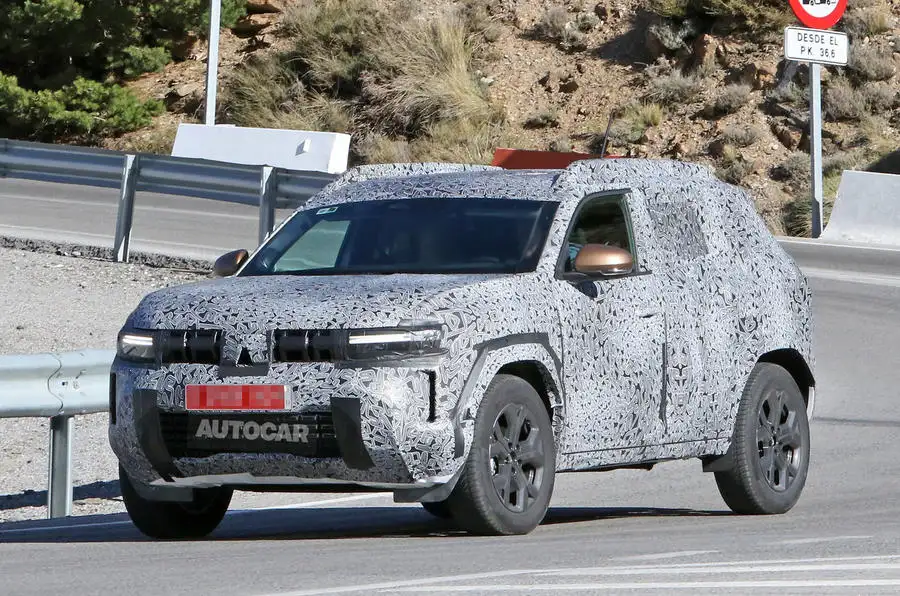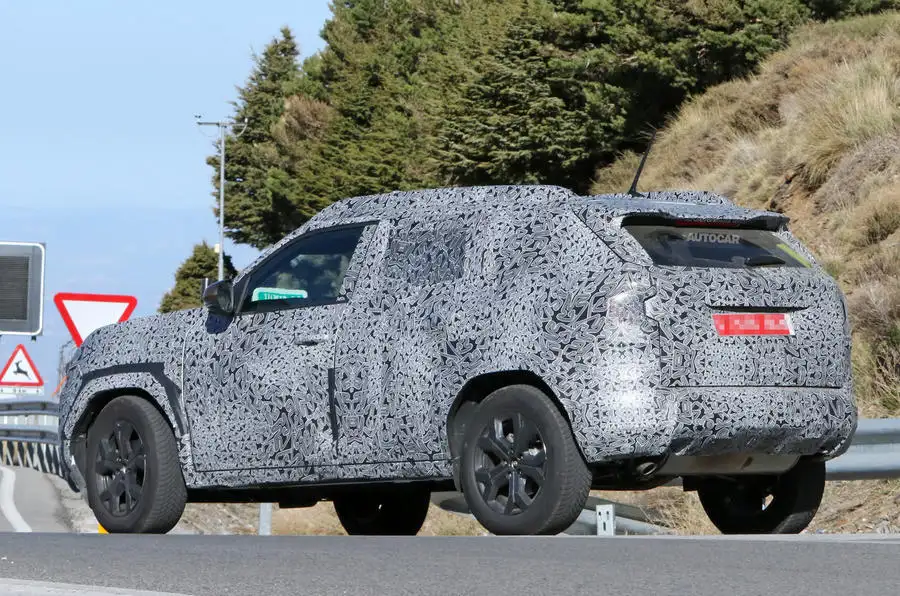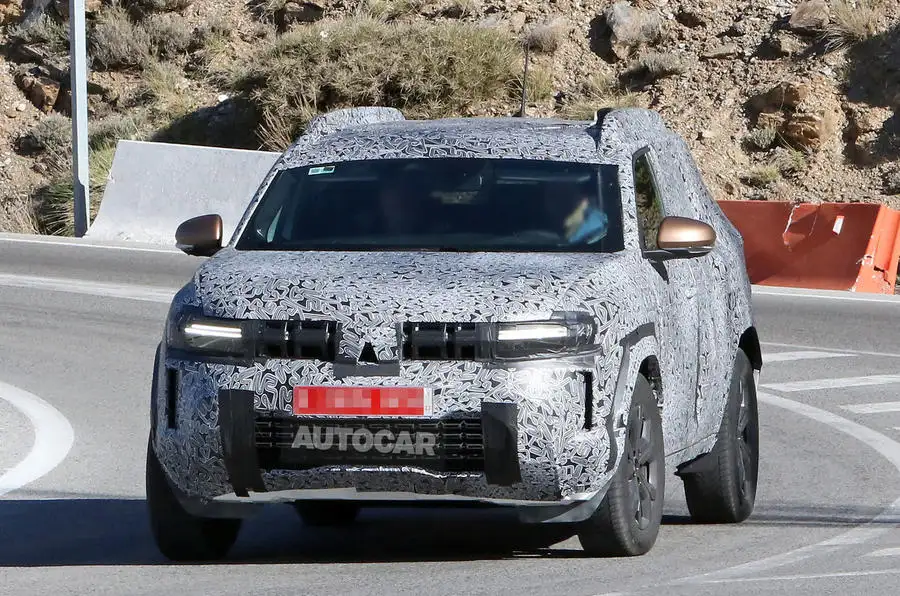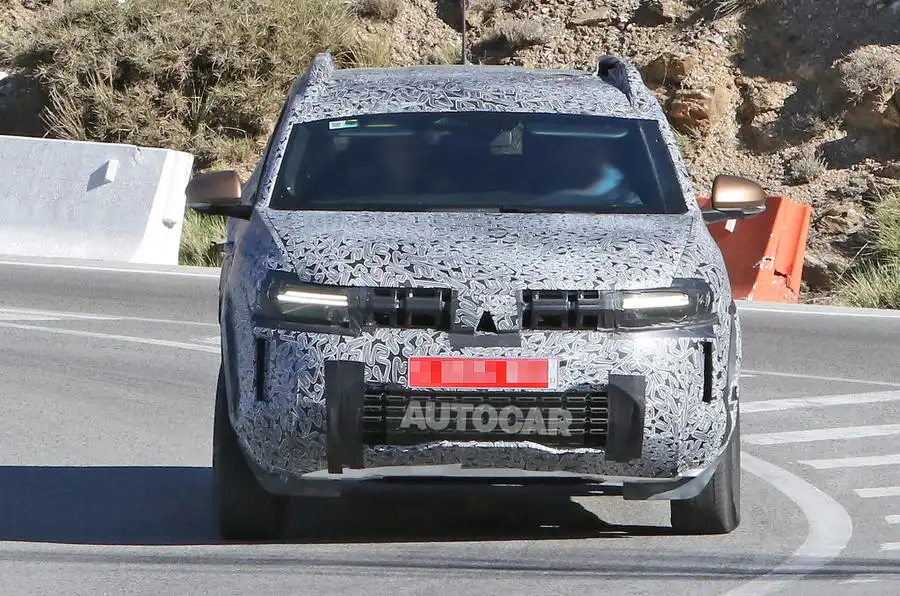Fresh-look value SUV from Dacia will follow the Bigster in adopting more rugged cues, while a hybrid drivetrain is a possibility.
The next-generation Dacia Duster will arrive in 2024 and a renewed focus on outdoor pursuits is set to be central to its positioning. The brand is yet to confirm an Australian introduction but is aiming to land in Renault showrooms from around 2025.
The Romanian brand’s third-generation crossover will be reimagined with an enhanced emphasis on its credentials as an activity-focused proposition, to strengthen its competitive edge over newcomers like the chunky Jeep Avenger, Mini Aceman and Ford Explorer.
While Dacia has yet to officially preview the third-generation Duster, hints from the firm’s head designer, David Durand, suggest it will embody the brand’s long-standing ‘less is more’ design ethos, with the design team working to “remove unnecessary things to focus on things that are really important”.
Its first public sighting seems to confirm this, with the Duster spotted looking a much chunkier, rugged proposition than the smoother-sided car it will replace.
Snapped by spy photographers, the budget SUV shows off a more box-shaped design, similar to its Renault Austral sibling, but with a flatter front end and longer overhangs. Dacia’s new sleeker facia, which was rolled out across the range as part of mini facelifts last year, also makes an appearance.
Speaking at the Paris motor show last year, Durand told Automotive Daily Network partner Autocar the Duster will get a spacious interior and a modular roof storage system that could feasibly accommodate a tent for overnight stays. He said: “This is a good car that allows you to do anything else.
“I love to say that we have Jogger owners with carbonfibre mountain bikes that are more expensive than their car. But they put all their money in that, then they have the perfect car to go everywhere with it, and this is the spirit we want to push for our cars.”
Renault’s budget brand is striving to ensure its SUV flagship remains true to its affordable and capable billing as it expands and electrifies its product line-up under the ‘Renaulution’ transformation strategy of its Renault Group parent.
Speaking to Autocar in 2021, Duster product boss Julien Ferry emphasised that the current model’s successor must be fundamentally “the same” car.
“Its role in the company is to provide a very good price-to-feature ratio,” he said. “It has to address these customers who are looking for a simple car which can go off road.”
Ferry emphasised that the Duster’s off-road ability will be a priority for the current model’s successor. Today’s 4×4 version is one of the cheapest four-wheel-drive SUVs on sale, with Ferry referring to it as “the best non-specialist off-roader”. Dacia will therefore “keep the recipe and update it following customer demand”.
Dacia CEO Denis Le Vot has already said the value brand will “leverage to the full” the Renault-Nissan-Mistubishi Alliance’s CMF-B architecture, as already used by the Duster’s smaller Dacia Sandero sibling, as part of a move to bring all of its models onto one platform.
This paves the way for the next-generation Duster, at some point in its lifecycle, to adopt the same Renault-derived hybrid powertrain as will soon be rolled out to the Dacia Jogger. As featured in the Renault Clio E-Tech, it pairs a 1.6-litre petrol engine with a pair of electric motors for 100kW and 250Nm. Le Vot has always said Dacia will go electric only when it absolutely has to, in order to keep costs down, so an electric Duster – or equivalent – is not expected in the short to medium term, although the next Sandero, due in 2028, is line for ICE and EV options.
However, Renault’s CMF-BEV architecture for electric vehicles is closely related to the conventional CMF-B structure used for the Duster, which makes it feasible for cars based on each to be produced at the same location and even on the same line. Crucially, the overall dimensions – including wheelbase and overhangs – are broadly similar, minimising the potential for costly bodywork and chassis modifications to adapt the Duster for full electrification.
Plus, Renault has confirmed its own retro-styled 5 concept – of which a production version will be arriving next year – will take its chunky 16in alloy wheels into production, suggesting capacity for the CMF-BEV platform to accommodate the large-diameter off-road wheels and tyres that are a crucial factor in the Duster retaining its workhorse-style appeal in its new generation.
However, the CMF-BEV platform is front driven and not for now compatible with twin-motor, four-wheel-drive powertrains, unlike the larger CMF-EV structure, which will house a second motor at the rear in Alpine’s forthcoming electric crossover.








